Something's Fishy: Homeward bound
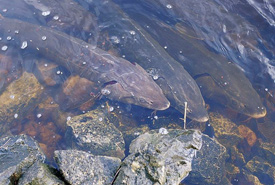
Lake sturgeon (Photo by U.S. Fish and Wildlife Service)
There’s really no place like home. Whether you’re returning from a vacation or simply coming home after work or school, there’s nothing like being greeted by the familiarity of your humble abode.
This feeling is multiplied when you visit the place you grew up in. From the wooden stairs up to your childhood bedroom, to the smell of mom’s cooking in the kitchen adorned with a cross-stitched ”Home, Sweet Home” sign, this sense of nostalgia is one we, as humans, cherish. Subsequently, we’re constantly throwing back to old memories, bringing back trends from our childhood and reliving moments in places we once knew.
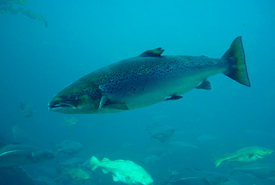
Atlantic salmon are an anadromous species, migrating from salt water to fresh water to spawn. (Photo by Hans-Petter Fjeld)
While they’re not exactly posting old photos to social media on Thursdays, certain fish species spend significant parts of their adult lives living in the past.
Anadromous and catadromous migration
Anadromous migration occurs when a species of fish moves from salt water into its native fresh waters. Species such as salmon and striped bass will swim long distances up rivers and streams to the place they were born in order to spawn. The lifecycle of Pacific salmon and most Atlantic salmon begins and ends here, with the spawning fish dying after they lay their eggs.
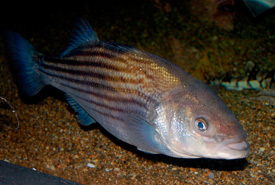
Striped bass (Photo by Steven G. Johnson)
Opposite to anadromous migration, catadromous fish will migrate from fresh water down into the sea. Certain eel species, such as American and European eel, are known to begin their lives in salt water, live in fresh water and migrate back down to the ocean to spawn.
Amphidromous and oceanodromous migration
Sometimes life takes us in funny directions, and often we ask ourselves what exactly got us to where we are today. Well, amphidromous and oceanodromous fish might be thinking the same thing.
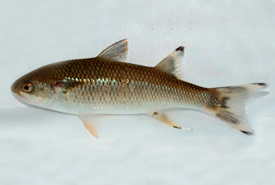
Mountain mullet, an amphidromous fish (Photo from Wikimedia Commons)
The poster-fishes for “going with the flow,” these fish are born in the ocean and drift as larvae down to their new homes. This process is what separates them from being classified as anadromous and catadromous fish.
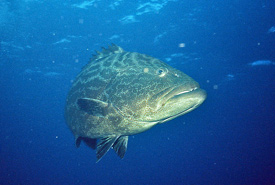
The oceanodromous black grouper (Photo by Bernard Dupont)
While oceanodromous fish (black grouper, mutton snapper) will stay in salt water all their lives, amphidromous fish (river goby, mountain mullet) are born in fresh water/estuaries and moved by currents into the ocean.
Potamodromous migration
Taking the term homebody to a whole new level are potamodromous fish. Never leaving fresh water, these fish are born upstream but will migrate downstream to grow into adults. Once they’re ready to spawn, they will move back upstream.
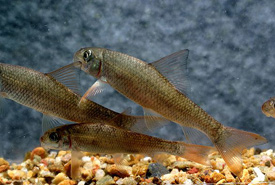
Sicklefin redhorse (Photo by Conservation Fisheries)
Species such as lake sturgeon and sicklefin redhorse will only migrate a short distance, usually from lake to stream or vice-versa to spawn.
Whether it’s just upstream or an ocean away, migratory fish always return home. While it might not have a busy kitchen with a little sign hanging above the window, home for these fish is just as sweet.
Something’s Fishy is a monthly series written by NCC’s Acting Project Lead, Employee Communications, Raechel Bonomo, highlighting a species or group of fishes that inhabitant Canadian waters.


